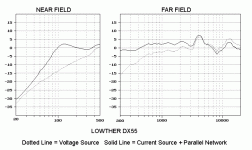Generally where alcohol is banned.....
... so is contraception, sexual education and reproductive self-determination amongst women.
Let us see the FR and distortion of the speaker you design for current drive. Almost all previous attempts fell short with uneven FR, flabby bass and not much improvement on distortion....Yes, I have designed a number of loudspeakers, I keep an eye on what the current does. It works!...
Last edited:
Let us see the FR and distortion of the speaker you design for current drive. Almost all previous attempts fell short with uneven FR, flabby bass and not much improvement on distortion.
I don't design speakers for current drive.
What made you think I did?
Sigh.
.
Then show us the flat FR and lower distortion of the superior speaker you design. It is very difficult for me to follow your description of amplifiers, just show the measurements of the resulting sound.
Last edited:
Then show us the flat FR and lower distortion of the superior speaker you design. It is very difficult for me to follow your description of amplifiers, just show the measurements of the final sound.
Why did you think I designed speakers for current drive?
Whatever Joe, voltage or current drive discussion with you is confusing. Do you have measurement of FR and distortion of your novel speaker?
Whatever Joe, voltage or current drive discussion with you is confusing. Do you have measurement of FR and distortion of your novel speaker?
Your confusion is not my confusion. And saying "whatever" is a copout. But one famous lecturer told his class that thinking voltage is easy and thinking current is not. He is right. So I educated myself in the same way that he educated himself - and now the confusion is gone. It's like learning a language, very confusing at the beginning, but persistence is required. Persistence is the opposite of laziness.
Why do you call it a novel speaker? Did I use that word?
A loudspeaker has a thousand frequency responses, but it only has one power response.
Look off-axis will generally give you an indication of the latter.
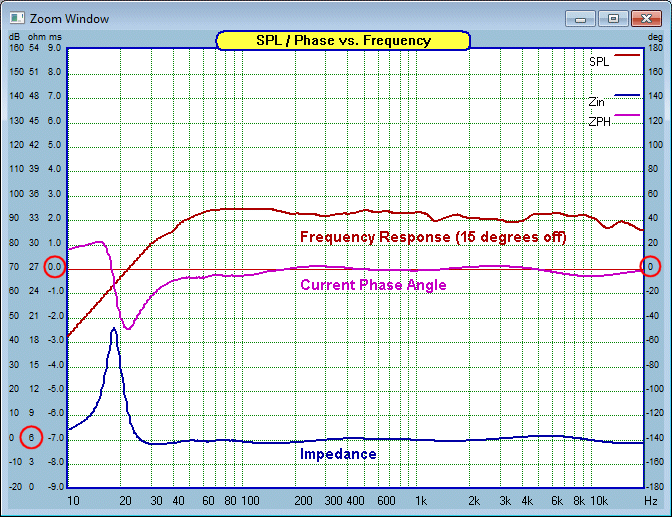
The above is simulated, the FR response is based on nearfield and far-field measurements combined in a very strict way.
Below is the actual measured electrical measurements:
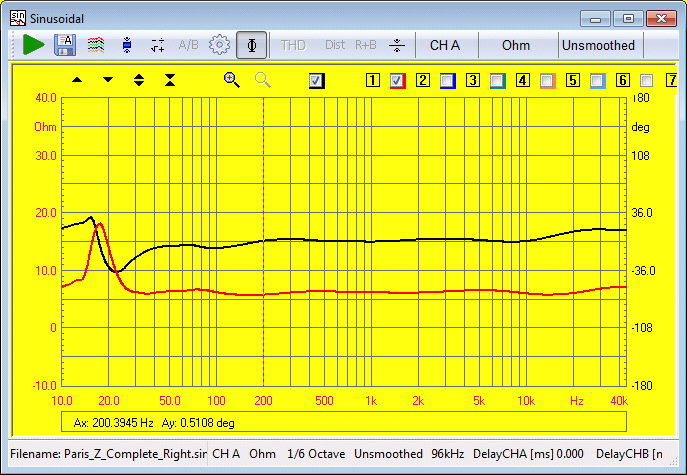
Next is the in-room response based on 1/6th octave uncorrelated pink noise (stereo). The below 1KHz includes room modes at the listening positioning. The troughs and peaks average out nicely, but room EQ would make it better still, but as shown it is very nicely balanced and sound like that.
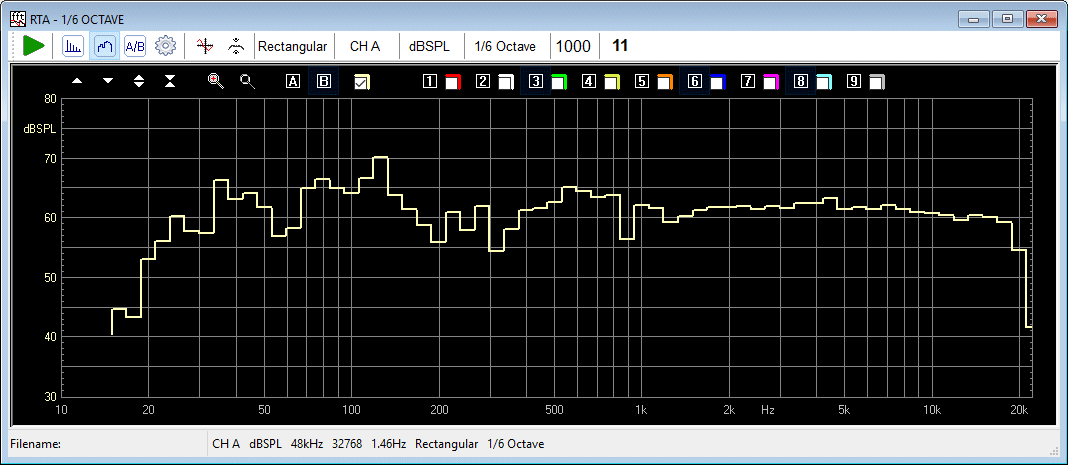
There is heaps of stuff on the website:
Elsinore Speakers DIY
As for speaker distortion, yes I do that of the individual drivers, but have you noticed that even John Atkinson of Stereophile does not do complete speaker system distortion measurements. There are good reasons for that. He does do CSD (Waterfall) plots and if they look right, then you have low distortion.
But you start with drivers that have low distortion and go from there. The tweeter/waveguide I use in the Elsinore Project (DIY and not commercial) has extraordinarily low distortion.
For an example of myself doing distortion measurement and analysis:
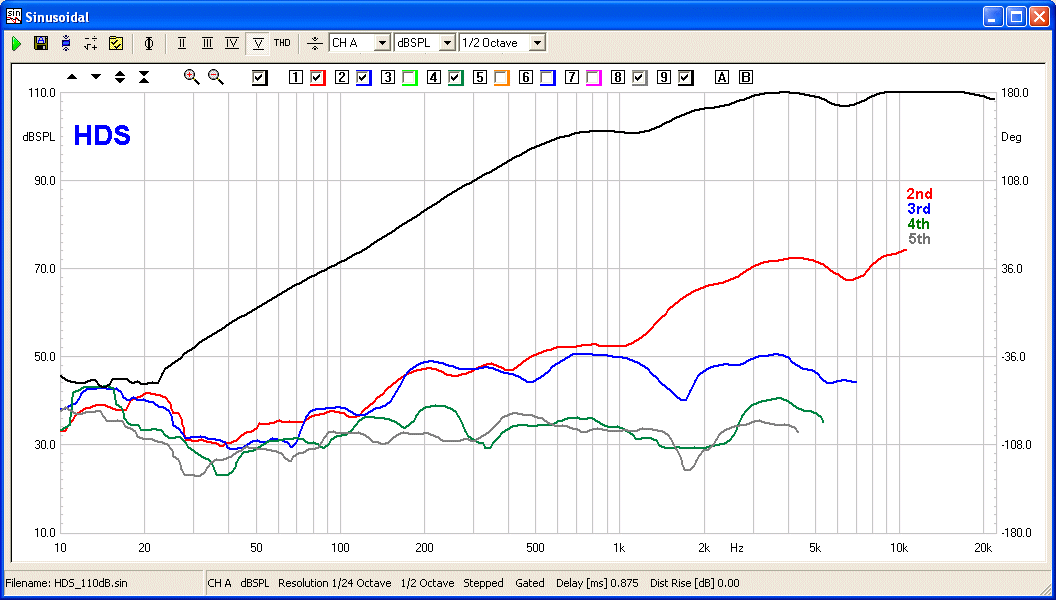
The full article and more FR and distortion measurements:
Peerless HDS Tweeter - Distortion Measurements
.
I thought people can only listen to sound waves. How do you listen to current of the amplifier? Does it involve some kind of probe into our body?
Put your tongue on the speaker terminals and crank up the volume. You’ll find out the sound of current right away, no speakers are required. Also, a Darwin Award will wait for you right after the listening session.
But, some say that all amplifiers sound different and if they do sound same, then theirPut your tongue on the speaker terminals and crank up the volume. You’ll find out the sound of current right away, no speakers are required.

Other members (presumably with less expertise than you) such as circlomanen in "Triodity" to cancel loudspeaker distortion and diegomj1973 in ClassB+a mosfet amplifier can show distortion difference of a speaker using amplifiers with different operating conditions. You claim to have superior knowledge and a mature speaker design, let's see the difference in distortion measurement on any driver of your speaker.As for speaker distortion, yes I do that of the individual drivers, but have you noticed that even John Atkinson of Stereophile does not do complete speaker system distortion measurements. There are good reasons for that.
... we do not want rehashing of material that has been flogged to death in other areas of the forum including the now closed BT thread.
Last edited:
It's not but as soon as someone starts out with "Some say...", it turns into one.Is this the Games channel?
As for non-games channel discussion, what's behind the listening seat of your sound room (where it was measured)?Next is the in-room response based on 1/6th octave uncorrelated pink noise (stereo). The below 1KHz includes room modes at the listening positioning. The troughs and peaks average out nicely, but room EQ would make it better still, but as shown it is very nicely balanced and sound like that.

I see. So when some say that all amplifiers sound the same (they don't), then in some people's minds it becomes censorship?
Peter Walker?
Anybody know him?
A wall. Is that not what most rooms have? Behind a couch. There has to be a wall, just a matter of distance.
Peter Walker?
Anybody know him?
As for non-games channel discussion, what's behind the listening seat of your sound room (where it was measured)?
A wall. Is that not what most rooms have? Behind a couch. There has to be a wall, just a matter of distance.
Last edited:
Then he does not know amplifiers or really has a hearing issue. Nelson Pass showed > 10dB difference at ~120Hz, same driver using different amps.... when some say that all amplifiers sound the same ...
Attachments
That's what I was getting at, the distance. Perhaps additional bass traps and distance or repositioning may improve the room mode you mentioned.There has to be a wall, just a matter of distance.
You left out amp and speaker matching skill.Then he does not know amplifiers or really has a hearing issue. Nelson Pass showed > 10dB difference at ~120Hz, same driver using different amps.
That's what I was getting at, the distance. Perhaps additional bass traps and distance or repositioning may improve the room mode you mentioned.
Now that is an intelligent comment. Quite a bit of positioning in the room was already tried and a definite 'sweet spot' was found, but don't put too much emphasis on that language. It just seemed to work there and also measure as shown. The room is 4M wide and the only way to point the speakers into that room. The width is 7M, but on the left side, there are built-ins in the corners. The front of the speakers is 1.2M into the room. On the right, some bass traps could be tried and thanks to your urging, I will find sometime later this year to try that and listen, and measure again. Thank you. Oh, and the ceilings are 2.6M.
- Home
- Member Areas
- The Lounge
- The Black Hole......
